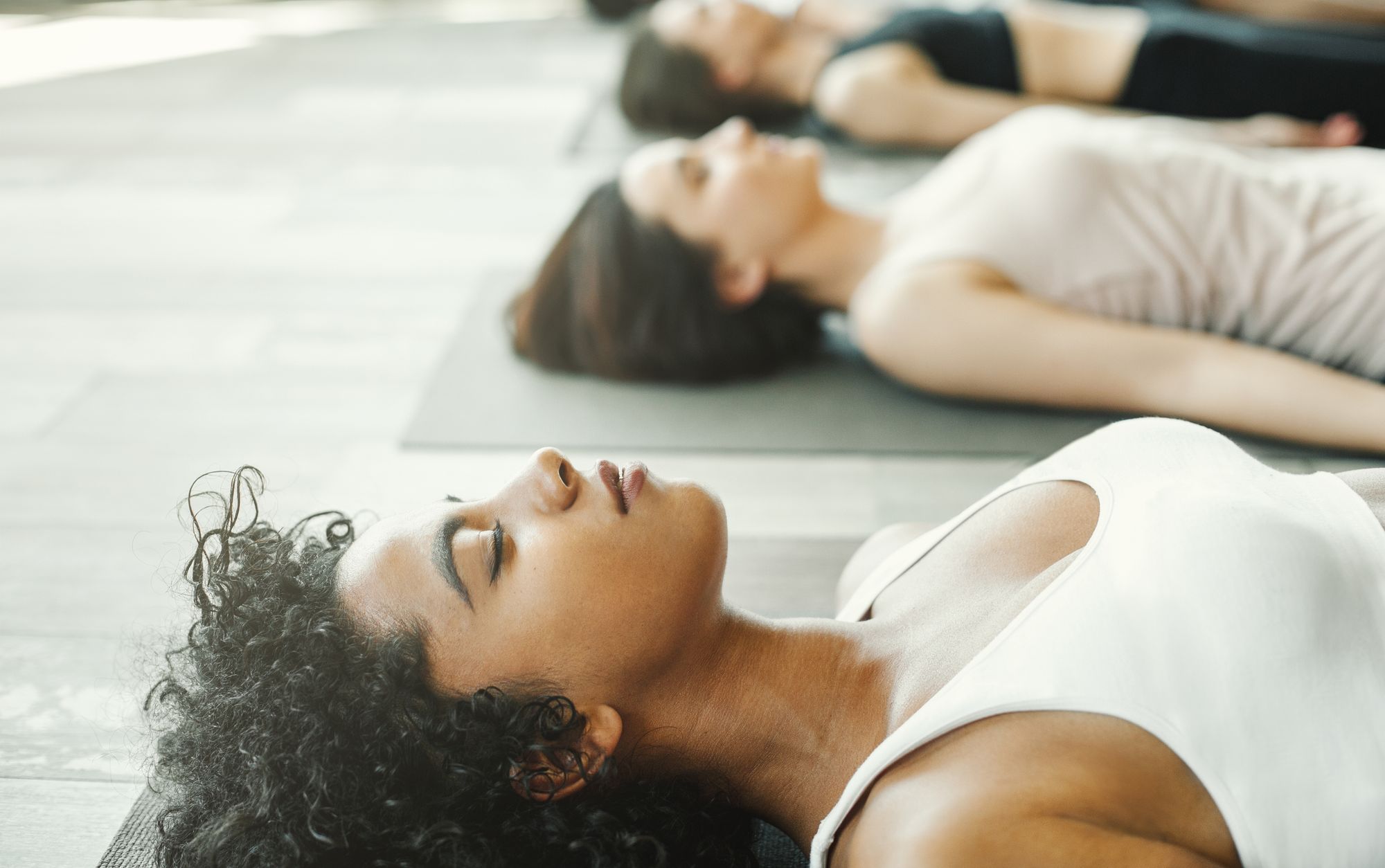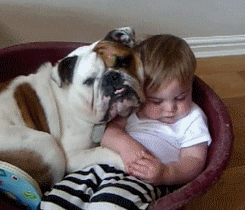Why You Should Forget Everything You Know About Short Rest Periods
If you’re like most people, you believe that short rest periods are superior for muscle hypertrophy. But — other than being a moral and (honestly, sometimes) an ego booster, do short periods really help with enhanced muscle growth?

If you’re like most people?
You believe that short rest periods (30–90 seconds) are superior for muscle hypertrophy. I mean, it feels good, right? To be out of breath, to have sweat lining every crevice of your body, and to experience muscles so pumped they almost feel like they’re going to explode any moment now.
But — other than being a moral and (honestly, sometimes) an ego booster, do short periods really help with enhanced muscle growth?
The Myth of Short Rest Periods
Turns out: no. Research has shown that this old adage has, unfortunately, not stood the test of time. But where did this idea originate from? There must have been reasons other than sadistic personal trainers who wanted to cram 10 working sets of exercises into your hour-long session, right?
Well, fortunately, yes — short rest periods were observed to stimulate more significant acute hormonal responses related to muscle growth and were, therefore, thought to be ideal for hypertrophy.
Thankfully, for gym-goers who’ve always felt like their hearts were going to beat right out of their chest after a 30-second rest period, it is now understood that the relationship between hormonal release and hypertrophy is correlational. Not causational.
Excellent — How Long Should I Rest For, Then?
So: if short rest periods are not ideal for hypertrophy, how many minutes should you set as your recovery period when working out?

Well, recent data has shown that more extended rest periods (for example, 3 minutes) on the major lifts — squats, bench press, and the deadlift — are probably the way to go to maximize muscle growth.
This makes perfect sense when you think about it: the longer you rest, the more you’re able to recover. When you’re well-rested, you’ll find that you’re ready to push through subsequent sets with higher loads or a more significant number of repetitions; this enables you to achieve better volume performance than if you had insufficient rest.
And of course, we all know that training volume, which is the main principle of periodization, is the most crucial factor when it comes to getting big.
Do I Need A Stopwatch?
Fantastic: now that you know more extended rest periods aid with helping you pack on the muscle mass, do you really need to count the seconds down with a timer? Or is it possible for you to intuitively rest and start chalking your hands when you feel ready again?
Those were the exact questions running through four scientists’ minds when they conducted this recent study. Let’s take a brief look at what their research entailed:
Purpose
The researchers wanted to find out if individuals can self-determine rest intervals and still successfully complete pre-determined training volumes.
· Subjects — Sixteen Australian male rugby players; these selected athletes have performed 4 years of resistance training under a strength coach.
· Protocol — Subjects reported to the laboratory four times, with each visit separated by at least 48 hours.
Session 1: Participants were instructed to perform a 5RM (5 Rep Max) back squat.
Session 2: Familiarization session; data from this session was not used in the analysis.
Session 3 & 4: Experimental sessions; the athletes were instructed to complete back squats of 5 sets of 5 reps each at their 5RM load. Each athlete was told to “choose a rest period you feel will allow you to complete a maximal effort during your next set.”
So: what were the results of this study? Well, the researchers found out that the participants were able to self-select their rest times (or, rest intuitively, in other words) and still effectively complete 5 sets of 5 at a previously tested 5RM. According to this study, it does seem that lifters can effectively gauge their own rest intervals for volume performance maximization.
And you don’t have to worry that you’re going to end up sitting on the bench for minutes on end either: the study showed that the intuitive rest times were pretty predictable.
The rest times averaged between 4 and 5 minutes, which turns out to be in line with the rough 3-minute guideline proposed at the beginning of this post.
Okay: What Do I Do The Next Time I’m Training?
Ultimately, you’ll find that resting anywhere between 3 to 5 minutes between compound movements is probably a good idea for the purposes of hypertrophy and strength adaptations.
But of course, there’s absolutely no need to rest for a full 3 minutes if you’re only performing assistance exercises, such as hamstring curls, or calf raises. Honestly, that might just be a complete waste of your time. You can probably better optimize your training time by going with 1 to 3 minutes when it comes to accessory lifts.
And that’s not the only occasion where short rest periods may be needed as well. When time constraints are an issue, do consider cutting your recovery periods. You don’t want to miss out on an anniversary dinner with your partner, or your friend’s wedding lunch reception because your recovery period totaled up to a full hour.
Just be sure to keep the peak intensity of your training the same when you opt for short rest periods. You can do so by slightly decreasing the load or the number of sets and repetitions.
So — What should I do in-between sets then?
Besides gasping for air, fighting your thirst and scrolling through your social media? You should consider stretching! In one of our previous articles we showed you the benefits of inter-set stretching. While all of the results leaned in favor of doing light stretching between sets, the science unfortunately didn’t have robust enough evidence. But there's more to it and if you missed it you can check it out here.
Conclusion
I hope I’ve convinced you that you don’t have to continually feel like you’re on the verge of a heart attack during your training session. Longer rest periods (3–5 minutes) can help you achieve the optimal training volume required to stimulate enhanced muscle hypertrophy.
And you know what to do if your training partner constantly pressures you into your next set even though you’re still gasping for air like a fish out of water: share this article with them!
All this information about the optimal rest period is useful and all, but you’re not going to get bigger from just resting. You need actually to put in the work! Worried that you don’t have enough time to exercises and be your own trainer at the same time ?
Don’t worry: GymStreak got you covered.

Download GymStreak smart gym workouts and get individualised and progressive workout plans that keep you motivated and give you results you can be proud of. No more excuses, download the app today!
Get GymStreakReferences
Ibbott, P., Ball, N., Welvaert, M., & Thompson, K. G. (2019). Variability and Impact of Self-Selected Interset Rest Periods During Experienced Strength Training. Perceptual and Motor Skills, 126(3), 546–558. https://doi.org/10.1177/0031512519835976
McCall, G. E., Byrnes, W. C., Fleck, S. J., Dickinson, A., & Kraemer, W. J. (1999). Acute and chronic hormonal responses to resistance training designed to promote muscle hypertrophy. Canadian Journal of Applied Physiology = Revue Canadienne De Physiologie Appliquee, 24(1), 96–107.
Morton, R. W., Oikawa, S. Y., Wavell, C. G., Mazara, N., McGlory, C., Quadrilatero, J., … Phillips, S. M. (2016). Neither load nor systemic hormones determine resistance training-mediated hypertrophy or strength gains in resistance-trained young men. Journal of Applied Physiology (Bethesda, Md.: 1985), 121(1), 129–138. https://doi.org/10.1152/japplphysiol.00154.2016
Phillips, S. M. (2012). Strength and hypertrophy with resistance training: Chasing a hormonal ghost. European Journal of Applied Physiology, 112(5), 1981–1983; author reply 1985–1987. https://doi.org/10.1007/s00421-011-2148-0
Schoenfeld, B. J., Pope, Z. K., Benik, F. M., Hester, G. M., Sellers, J., Nooner, J. L., … Krieger, J. W. (2016). Longer Interset Rest Periods Enhance Muscle Strength and Hypertrophy in Resistance-Trained Men. Journal of Strength and Conditioning Research, 30(7), 1805–1812. https://doi.org/10.1519/JSC.0000000000001272
